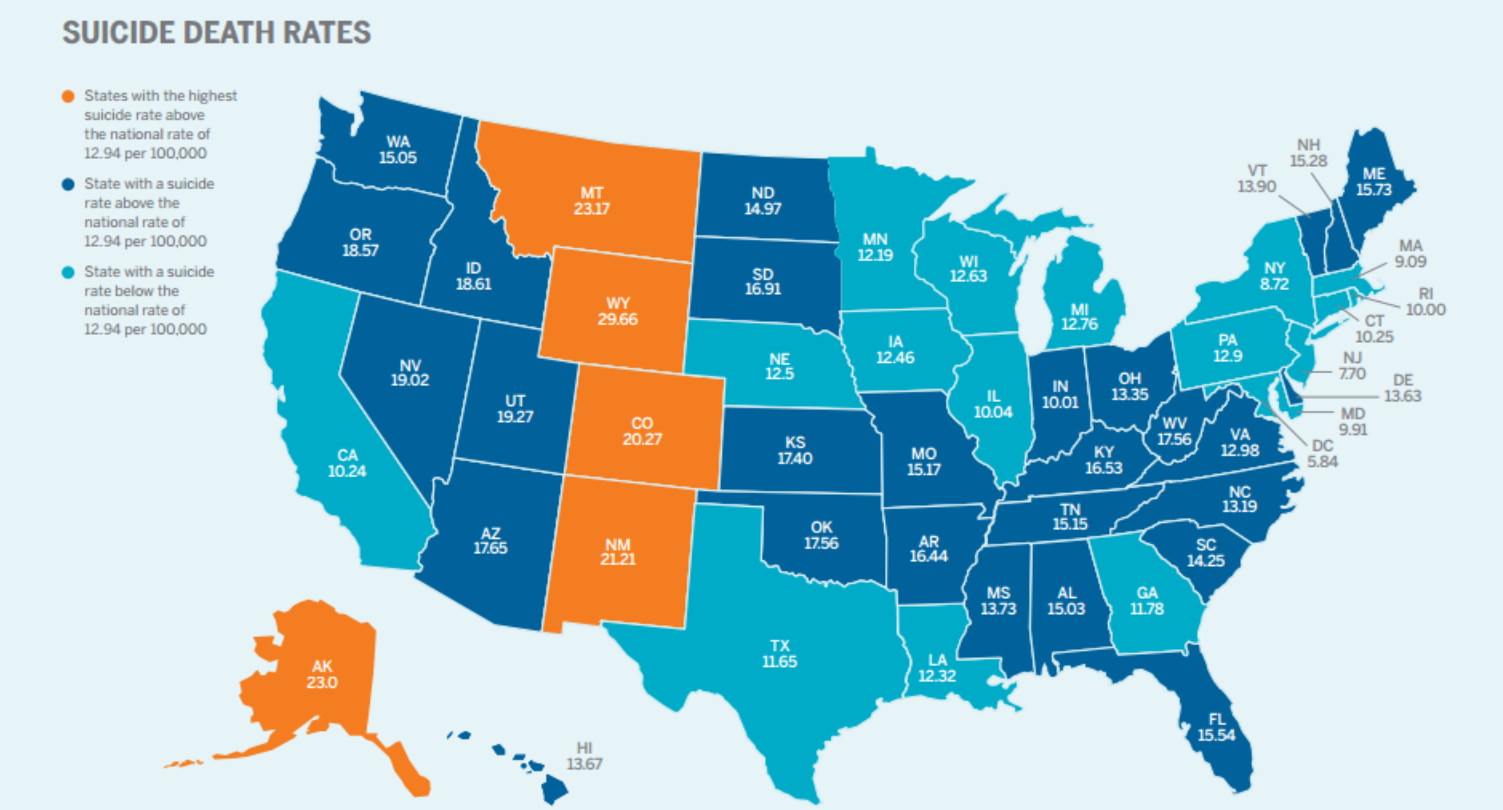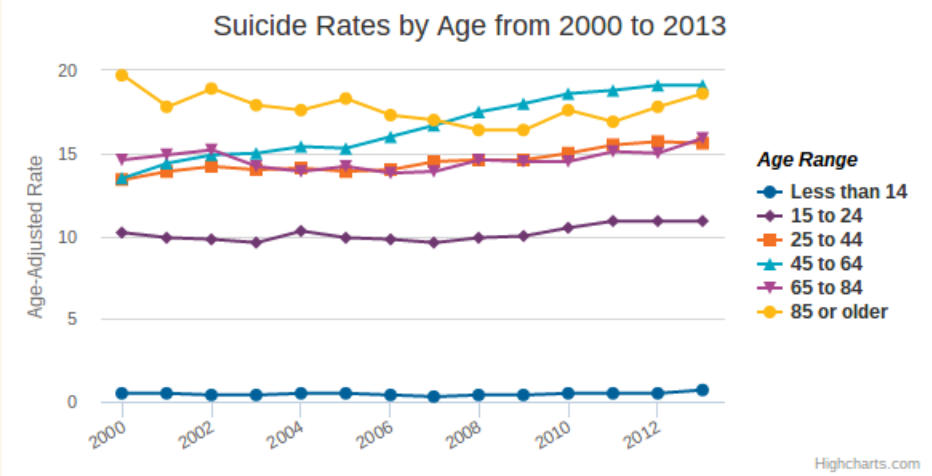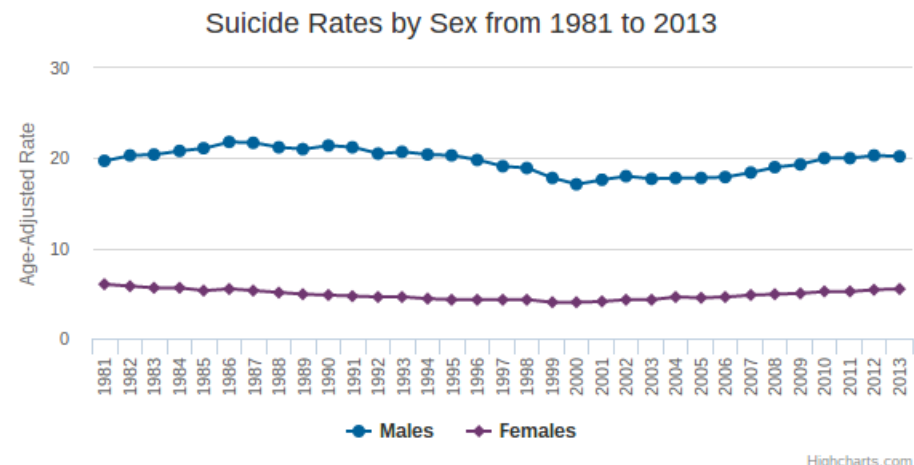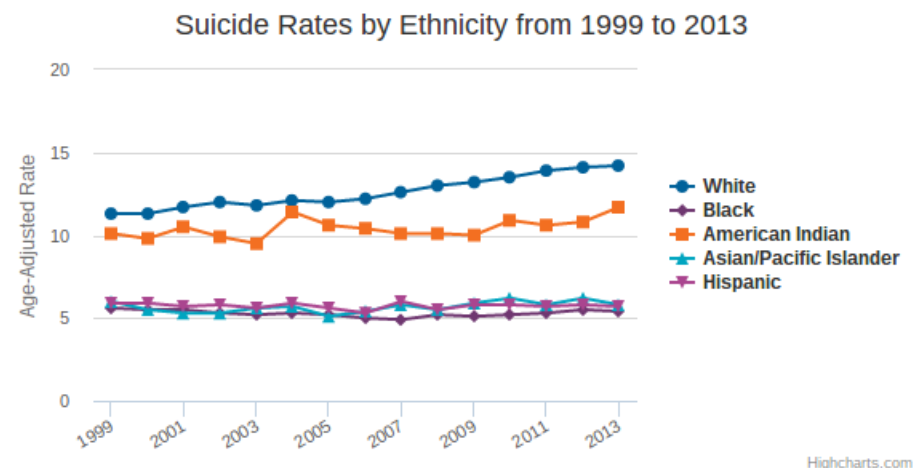Things That Are Important to Know About Suicide

By:
In 2014 when beloved actor and comedian Robin Williams committed suicide, the world was shocked. No one could believe that the light-hearted comedian would take his own life. But sadly the tragedy of suicide happens all the time to the point where it is the tenth leading cause of death in America, behind heart disease. Although suicide happens frequently, most people are not aware of who it affects and what triggers it. Here are four surprising facts about suicide.
1. States with the highest and lowest suicide rates
Suicide is the tenth leading cause of death in the U.S., with 41,149 suicide deaths reported in 2013, according to the American Foundation for Suicide Prevention (AFSP). Currently, the national suicide rate is 12.94 per 100,000 people. In 2000 the national suicide rate hit its lowest at 10.4 suicides per 100,000 people. However, since 2005 the national average has steadily increased.
States like Wyoming, Montana, Alaska, New Mexico and Colorado have the highest suicide rates in the country; each state's suicide rate exceeds the national average by at least eight points. On the other hand, New Jersey, New York, Massachusetts, Maryland, as well as the District of Columbia all rank at the bottom as the states with the lowest suicide rates in the nation, according to the AFSP.
 American Foundation For Suicide Prevention
American Foundation For Suicide Prevention
2. Most suicides DO NOT occur during the holidays
Spring is the the most common time for suicide rates to peak. There is no definitive answer to explain why the number of suicides rise in the springtime. Some experts believes that a significant decrease in social contact is to blame. During the holidays people are more likely to engage in traditional and often mandatory social commitments, making it difficult to isolate themselves from others and nurture feelings of hopelessness. In this way proximity of family and friends can aid in diverting suicide attempts. But during spring, these social gatherings are not as common, making it easier for suicidal thoughts to remain unchecked in a person's mind.
3. Age, Gender, and Ethnic groups most at risk for suicide
Although suicide can affect all ages, it is the second leading cause of death for people aged 15-34 in the U.S., according to the Centers for Disease Control. (Not to mention that suicide was also the second leading cause of death in 15-29 year-olds worldwide in 2012.)
However, 45-65 year-olds and people 85 or older have had the highest rate of suicides in America for decades. As an article by Forbes points out, the reason for this could be attributed to drastic lifestyle changes in one's career, finances, and social circles. As you get older, there may be less financial security and/or a breakdown in families.
 American Foundation For Suicide Prevention/Highcharts.com - afsp.org
American Foundation For Suicide Prevention/Highcharts.com - afsp.org
When it comes to gender, men have outpaced women suicide rates for years.
Even though both men and women suffer from depression, men are four times more likely than women to commit suicide, according to the American Foundation for Suicide Prevention. This is partly because many men shy away from getting help or don't feel as free to communicate their depression.
 American Foundation For Suicide Prevention/Highcharts.com - afsp.org
American Foundation For Suicide Prevention/Highcharts.com - afsp.org
In 2013, men accounted for 77.9 percent of all suicides. But out of those suicides, 70 percent were committed by white men. White men had highest suicide rate at 14.2, followed by Native Americans and Alaskan Natives at 11.7.
 American Foundation For Suicide Prevention/Highcharts.com - afsp.org
American Foundation For Suicide Prevention/Highcharts.com - afsp.org
4. Jobs people with high suicide rates
According to CBS News, a study found that 1,719 people committed suicide at work between 2003-2010, and that men ages 65-75 were at a higher risk of taking their lives on the job.
Researchers of that study explained their theory as to why some professions are more suicide prone.
"Our hypothesis that may explain the increased suicide rate among specific occupations is the availability and access to lethal means, such as drugs for medical doctors and firearms for law enforcement officers. Workplace stressors and economic factors have also been found to be linked with suicide in these occupations."
Some of these occupations include:
- Law enforcement and any protective service job; the suicide rate is 5.3 per 1,000,000 workers.
- Farmers, fishermen and foresters; the suicide rate is 5.1 per 1,000,000 workers.
- Maintenance workers; the suicide rate is 3.3 per 1,000,000.
- Movers and jobs with heavy lifting; the suicide rate is 2.4 per 1,000,000
If you or a loved one are suffering from suicidal thoughts, contact the National Suicide Prevention Lifeline at 1-800-273-8255 or online.
